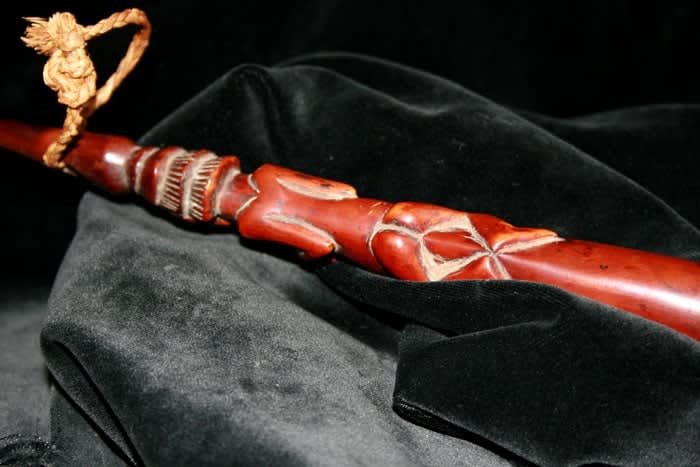Hemba Ivory Trumpet, 19th Century CE - 20th Century CE
Ivory
15.6
DK.012 (LSO)
This attractive piece is an ivory trumpet from the Hemba of the DRC. It retains the fundamental tusk structure, with a wide proximal end narrowing to the mouthpiece at the...
This attractive piece is an ivory trumpet from the Hemba of the DRC. It retains the fundamental tusk structure, with a wide proximal end narrowing to the mouthpiece at the distal tip. The body of the trumpet is decorated with geometric hatching in a roughly diamante form, while the tip is adorned with the figure of a pregnant (?) woman, her legs wrapped around the trumpet, the mouthpiece protruding from her head. The ivory is a dark colour, but it does not have extensive wear.
The Hemba are an agriculturally-based group living on the banks of the Lualaba River, in what was once Zaire. They are arranged into large groups which approximate to clan, each of which has a common ancestor, and is headed by an elder known as the Fuma Mwalo. He is responsible for justice, receives tribute from his subordinates; his power is counterbalanced by secret societies called Bukazanzi (for men) and Bukibilo (for women).
The Hemba were long believed to be contiguous with the Luba, and only achieved sociocultural independence in the eyes of western African art history in the 1970s. Their artistic production can be differentiated in terms of the delicacy (enthusiasts would describe it as “refinement”) of Hemba carving. They are known for their decoration of secular and utilitarian objects, notably caryatid stools, headrests and musical instruments such as this.
This is an attractive piece of African art, and would be an interesting addition to any collection.
The Hemba are an agriculturally-based group living on the banks of the Lualaba River, in what was once Zaire. They are arranged into large groups which approximate to clan, each of which has a common ancestor, and is headed by an elder known as the Fuma Mwalo. He is responsible for justice, receives tribute from his subordinates; his power is counterbalanced by secret societies called Bukazanzi (for men) and Bukibilo (for women).
The Hemba were long believed to be contiguous with the Luba, and only achieved sociocultural independence in the eyes of western African art history in the 1970s. Their artistic production can be differentiated in terms of the delicacy (enthusiasts would describe it as “refinement”) of Hemba carving. They are known for their decoration of secular and utilitarian objects, notably caryatid stools, headrests and musical instruments such as this.
This is an attractive piece of African art, and would be an interesting addition to any collection.
